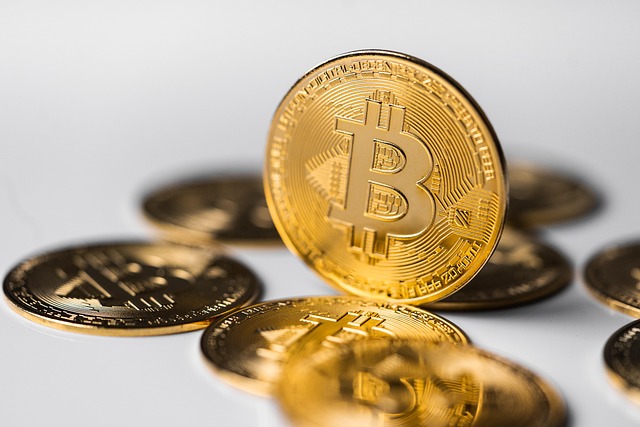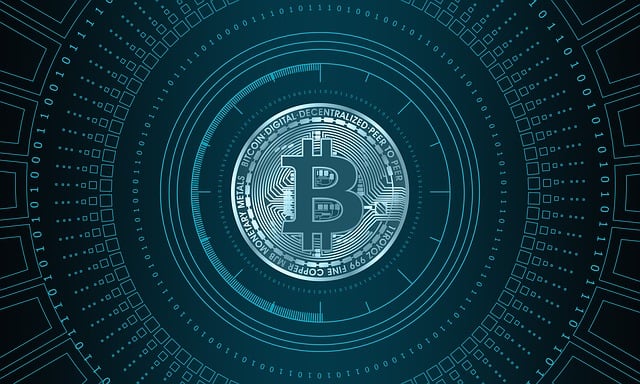Crypto Transaction Process Explained: A Comprehensive Guide
Author: Jameson Richman Expert
Published On: 2025-08-25
Prepared by Jameson Richman and our team of experts with over a decade of experience in cryptocurrency and digital asset analysis. Learn more about us.
Understanding the intricacies of the crypto transaction process is essential for anyone looking to delve into the rapidly evolving world of cryptocurrencies. As digital assets transition from niche investments to mainstream financial tools, a clear comprehension of how transactions are initiated, validated, and permanently recorded on blockchain networks becomes increasingly vital. This detailed guide aims to unpack each phase of the process, highlighting the underlying blockchain technology, wallet management strategies, transaction fee mechanisms, security best practices, and the role of reputable platforms. Equipped with this in-depth knowledge, users can confidently navigate the crypto ecosystem, minimize risks, optimize transaction efficiency, and enhance security.

Introduction to Cryptocurrency Transactions
Cryptocurrency transactions are fundamentally different from traditional fiat bank transfers. Instead of relying on centralized financial institutions, cryptocurrencies operate on decentralized, distributed ledger systems called blockchains. These networks consist of numerous nodes—computers running blockchain software—that maintain an identical copy of the transaction history, ensuring transparency, redundancy, and resistance to censorship. Transactions on these networks are secured using advanced cryptographic techniques, primarily through digital signatures and hash functions, which guarantee authenticity, data integrity, and non-repudiation. Additionally, blockchain consensus mechanisms—such as proof-of-work (PoW) and proof-of-stake (PoS)—coordinate network validation without the need for a central authority, enabling peer-to-peer transfers that are often faster, more cost-effective, and censorship-resistant compared to traditional banking systems.
Furthermore, understanding the technical foundation of blockchains provides insight into transaction finality, network scalability issues, and the importance of transaction confirmation times. As the ecosystem matures, new consensus algorithms and Layer-2 solutions aim to address existing limitations, making crypto transactions more efficient and accessible worldwide. These innovations are critical in enabling mass adoption, by reducing transaction costs and increasing throughput, especially during periods of high network congestion.
Wallets and Address Management
A crypto wallet serves as the primary interface for storing, managing, and executing blockchain transactions. Wallets are software or hardware tools that hold your private keys—cryptographic secrets that grant control over your funds—and generate public addresses used for receiving assets. Proper wallet management is crucial for security and usability, especially given the irreversible nature of most crypto transactions.
- Software Wallets: These are applications installed on desktops or mobile devices, offering user-friendly interfaces and quick access. Examples include MetaMask for Ethereum, Trust Wallet for multi-asset support, and Exodus. While convenient, they are vulnerable to malware and hacking if not protected properly. Regular backups and encryption are vital to safeguard private keys.
- Hardware Wallets: Physical devices like Ledger Nano S/X and Trezor store private keys offline, providing robust security against online threats. They are recommended for holding large or long-term holdings due to their resilient offline storage. Hardware wallets often support multiple cryptocurrencies and can integrate with various wallet management applications for seamless use.
- Web Wallets: Hosted by exchanges or third-party providers, web wallets facilitate easy transactions but rely heavily on the security protocols of the hosting platform. They are more vulnerable to hacks but are suitable for active trading or quick transfers. Always enable additional security features offered by the platform, such as two-factor authentication (2FA).
Each wallet has a unique public address derived from the private key via cryptographic hash functions. Sharing this address enables others to send you crypto, while the private key must be kept secret to prevent unauthorized access. Advanced security measures include employing multisignature wallets, hardware security modules, and employing seed phrases for recovery. Hierarchical deterministic (HD) wallets generate a new address for each transaction, enhancing privacy and reducing address reuse risks. Proper wallet management also involves regular software updates, secure storage of seed phrases, and understanding the differences between hot (online) and cold (offline) storage options.
Initiating a Transaction
Starting a crypto transaction involves several carefully executed steps to ensure security, correctness, and smooth execution:
- Access your wallet: Open the application or device where your private keys are stored. Ensure the environment is secure, preferably offline or on a trusted device.
- Select recipient: Enter the recipient’s wallet address accurately. To minimize errors, many users scan QR codes or utilize address book features, and some wallets support address validation tools that check for common mistakes.
- Specify amount: Input the amount of cryptocurrency to send, considering network fees, minimum transfer limits, and your available balance. Many wallets provide real-time fee estimation tools to assist with this process.
- Set transaction fee: Choose an appropriate fee level based on current network conditions. Higher fees incentivize faster confirmation, especially during congestion peaks. Some wallets automatically suggest optimal fees based on network status.
- Sign the transaction: The wallet cryptographically signs the transaction data with your private key, creating a digital signature that proves your authorization without exposing sensitive information. Hardware wallets perform this signing process offline, adding an extra layer of security.
- Review and confirm: Double-check all details—recipient address, amount, fee—before authorizing the transaction. Once confirmed, broadcast it to the blockchain network. Many wallets offer transaction previews and validation prompts to prevent mistakes.
Proper verification at this stage prevents errors that could lead to irreversible asset loss. For high-value transfers, consider additional security practices such as multi-factor authentication, offline signing, and multi-signature requirements to ensure transaction integrity.

Blockchain Validation and Confirmation
After broadcasting your transaction, it enters the validation phase within the blockchain network. This process involves multiple steps to ensure legitimacy and permanence:
- Validation by network nodes: Network participants verify the digital signature, check for sufficient unspent transaction outputs (UTXOs) or account balances, and confirm adherence to consensus rules like transaction format and fee requirements. Nodes reject invalid transactions, which helps maintain the integrity of the network.
- Inclusion into a block: Valid transactions are grouped into a new block by miners (PoW) or validators (PoS). This involves solving computational puzzles (PoW) or validating stake commitments (PoS). Miners compete to add the next block, incentivized by block rewards and transaction fees.
- Addition of the block: The newly formed block is added to the existing blockchain via the consensus mechanism, permanently recording included transactions. This process ensures decentralized agreement on the transaction history.
- Confirmations: Each subsequent block appended on top of the block containing your transaction increases its confirmation count, reinforcing its immutability. Typically, six confirmations are considered secure for Bitcoin, though this varies across networks. Confirmations are crucial for transaction finality, especially in large-value transfers.
Confirmation times depend on network congestion, block size, and fee levels. During periods of high traffic, transaction confirmation can take from a few seconds to several hours. Blockchain explorers are essential tools for users to monitor transaction inclusion and confirmation status in real-time, providing transparency and peace of mind.
Security Measures in Crypto Transactions
Security is the cornerstone of cryptocurrency management, given the irreversible nature of most transactions and digital vulnerabilities involved. Implementing rigorous security measures minimizes risks of theft, fraud, and accidental loss:
- Strong passwords and two-factor authentication (2FA): Protect your wallets and exchange accounts with complex, unique passwords complemented by 2FA methods such as authenticator apps or hardware tokens. This reduces unauthorized access risks.
- Hardware wallets: Store private keys offline to prevent hacking. Hardware wallets also often support passphrase protection and PIN security, adding layers of defense.
- Transaction verification: Always verify recipient addresses and details, especially for large transactions. Use QR codes or address book features to avoid manual entry errors. Cross-check addresses via multiple sources if possible.
- Phishing and scam awareness: Always verify URLs, avoid clicking on suspicious links, and beware of social engineering tactics. Never share private keys or seed phrases, and be cautious of unsolicited communication requesting your credentials.
- Reputable platforms: Engage only with established exchanges and wallets that employ industry-standard security protocols, such as cold storage, multi-signature authorization, and regular security audits.
- Multisignature wallets and regular security audits: Employ multi-signature setups requiring multiple keys for transaction approval, reducing single-point vulnerabilities. Conduct periodic security reviews to identify and address emerging threats.
Additional best practices include enabling device encryption, conducting software updates promptly, enabling VPNs for internet privacy, and educating oneself on emerging scams. Staying informed about new threats and security technologies is essential for safeguarding your assets in the evolving crypto landscape.
Getting Started with Crypto Platforms
For newcomers, entering the crypto space typically involves registering on reputable exchanges, which act as gateways to broader blockchain networks. These platforms simplify the process of buying, selling, and transferring digital assets by providing user-friendly interfaces, integrated security features, and liquidity pools. Essential steps include:
- Register on trusted platforms such as Binance, MEXC, Bitget, or Bybit.
- Complete KYC (Know Your Customer) and identity verification to comply with regulations, increasing account security and trust.
- Deposit fiat currencies via bank transfers, credit cards, or other supported methods, or transfer in existing cryptocurrencies.
- Leverage educational resources provided by platforms, including tutorials, demo accounts, and customer support, to build confidence in managing your crypto assets.
Many of these platforms also offer integrated wallets, allowing users to manage private keys securely while enabling seamless transaction execution, trading, and asset management across multiple cryptocurrencies. It’s important to choose platforms with robust security track records and transparent operational policies.

The Future of Crypto Transaction Processing
The landscape of crypto transaction processing is set for transformative innovation, addressing current scalability, speed, and cost challenges. Emerging developments include:
- Layer-2 Scaling Solutions: Technologies such as Bitcoin’s Lightning Network, Ethereum’s rollups, and state channels facilitate off-chain or side-chain transactions, drastically reducing network congestion and transaction fees. These solutions support micropayments, instant settlement, and increased throughput, making crypto more viable for everyday transactions.
- Decentralized Finance (DeFi): DeFi platforms leverage smart contracts to provide services like lending, borrowing, liquidity pools, and decentralized exchanges—entirely on-chain—eliminating traditional intermediaries and increasing financial inclusion.
- Consensus Algorithm Innovations: Transitioning from energy-intensive proof-of-work to more sustainable proof-of-stake systems, alongside sharding and DAG-based architectures, enhances scalability, security, and environmental sustainability.
- Regulatory Developments and CBDCs: Governments and central banks are exploring Central Bank Digital Currencies (CBDCs), which aim to enable real-time settlement, reduce fraud, and integrate digital currencies into existing financial systems under regulatory oversight. This evolution could reshape the transactional landscape significantly.
Staying informed and adaptable to these technological and regulatory shifts will be crucial for users, investors, and developers to maximize benefits while mitigating emerging risks in this dynamic ecosystem.
Conclusion
Mastering the crypto transaction process is fundamental for participating securely and efficiently in the digital economy. From setting up wallets and initiating transactions to understanding blockchain validation and confirmations, each step warrants careful attention to security, accuracy, and procedural best practices. Leveraging reputable platforms, adopting robust security measures, and remaining abreast of technological innovations empower users to safeguard their assets and unlock the full potential of blockchain technology. As the ecosystem continues to evolve with advancements in scalability, security, and regulatory frameworks, embracing these developments will position individuals and institutions to participate confidently in a borderless, transparent, and decentralized financial future.